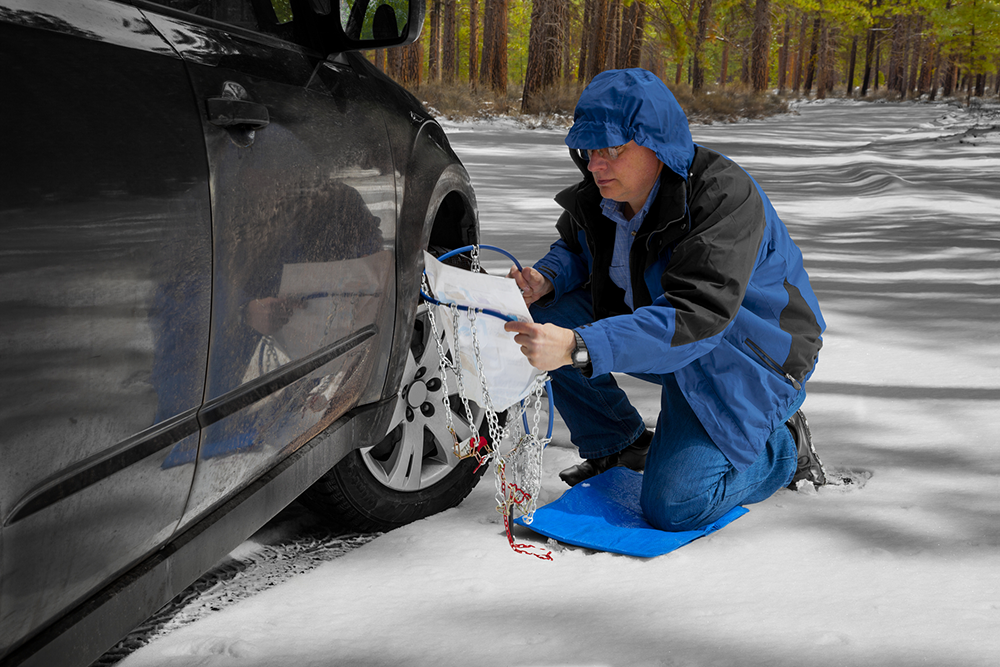Latest Tire Chains Get High Tech Makeover

Snow chains may seem like a simple technology, but it can feel pretty complex when you’re trying to hook them up on the side of a highway mid-snowstorm.
“Practice installing tire chains before you actually need them,” said Troy Baumgartner, marketing director at Peerless Chain Company. “It’s easier to learn how to put them on in good weather in your driveway than on the side of the road in a blizzard."
Traditionally, snow cables and chains consisted of a “ladder” pattern. Recent years have seen the adoption of more aggressive styles, such as “Z” and “diamond” configurations. Some devices even feature studs, though the use of studs is restricted or even prohibited in some areas.
Early versions of snow chains used diamond-shaped steel links woven between the wheel’s spokes. Now companies craft modern “traction devices” from materials including aircraft cable, rubber, plastic and, of course, steel.
“The products have evolved over the years into a variety of different materials and styles focused on improving traction, simplifying installation and reducing vibration and wear," Baumgartner said. "Improvements have also been made in regards to vehicle compatibility and overall safety."
Routinely sold in pairs, snow chains come in a variety of sizes based on the tire's tread width and diameter. Ladder chains carry the name because they look similar to a ladder when laid on the ground. When installed, ladder chains wrap across the tire, perpendicular to the ground. Diagonal chains form a diamond pattern over the tire, effectively creating a net that chews through snow.
Regardless of the pattern, snow chains typically wrap around the circumference of the tire, and are secured in place by a tensioner that may be a chain, cable or elastic material.
Baumgartner offered the following advice for buying and using snow chains:
- Check your owner’s manual. Some vehicle manufacturers steer you away from putting on snow chains. Such vehicles typically have minimal clearance around the wheels and chains pose a risk of automotive damage.
- Know where to install the chains. Ideally, apply traction devices to all four tires. However, attach the chains to the tires on the drive axle if you only have two. That means chains on the front tires for front-wheel drive vehicles and on the back wheels for rear-wheel drive.
- Consider it an investment. Devices with diagonal cross patterns and alloy coils typically enjoy the longest lifespan.
- Studs? Or No studs? Some chains and traction control devices feature metal studs, which help increase grip in snowy weather. However, not all areas allow drivers to use studded chains. Check the winter driving regulations in your area.
- Drive slow and steady. Chains are made for traction at slow speeds.
- Don’t use chains on dry roads. Using chains on dry roads can cause a vehicle to slide while braking, and significantly damage both the tire and the road itself.
- Try to make yourself comfortable while installing. A pair of gloves providing warmth and dexterity go a long way toward keeping your fingers nimble, which is a huge help when working the fasteners and clasps. It also helps to have a dry towel to lay on, as the ground will probably be damp or snowy.
Copyright © 2018 Sensible Driver. All rights reserved.